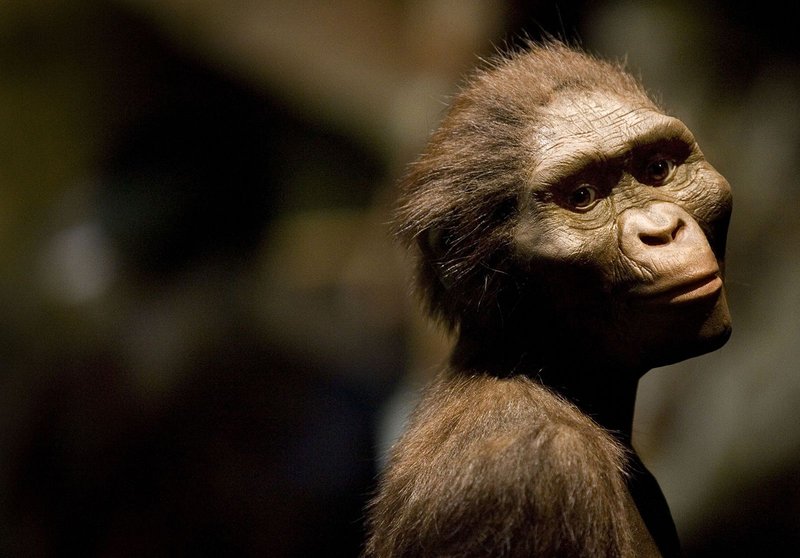- The hominids have evolved from a common ancestor.
- Ancestry is visible in the structure of our skeleton.
- The same forces apply for human evolution as for any species.
- Selection, isolation and change.
Phylogeny of Homininae
- Gorillas, chimpanzees and mans have common ancestors.
- We have some evidence on the common origins.
- Such as skeletal structures.
Defining Human Features
- Straight posture.
- We have little to no hair.
- We have greater intellect than other animals.
- Self-aware.
- Culture and religion.
- Walking on two legs.
- Social life.
- Speech and development of the brain.
- Language and symbols.
Human Ancestors
Australopithecus
- Australopithecines or southern apes (Australopithetucs) were the first predecessors of modern humans.
- Lived on savannahs and walked upright.
- First fossils were found in the 1920s.
- The brains of most Australopithecus species were roughly 35% of the size of the human brain.
- Standing 1.2 to 1.4 meters tall.
- Males were much larger than females.

Australopithecus afarensis
- 3.9 to 2.9 million years ago.
- Lucy was a specimen discovered in 1970 to 1974 and is named after a song by the Beatles.
- The Lucy specimen contained 40% of the skeleton of Australopithecus afarensis.
- Considered to be the first fossil of a hominin walking upright.
Homo Habilis
- Also called the "handy man".
- Possibly part of the Australopithecus.
- Lived partially on trees but could also move around on two feet.
- Likely lived in large groups and communities, similarly to the baboons today.
- It was omnivorous and ate more meat compared to Australopithecus.
- Tools were found which could be used to butcher and skin animals or to crush bones.
Homo erectus
- Meaning the "upright man".
- Elongated legs and shorter arms, allowing it to walk upright efficiently.
- It could run and walk long distances.
- A flat face, prominent nose and possibly sparse body hair coverage.
- Advanced social life, takes care of the weak and old individuals.
- This can be deduced from numerous fossils and footprints found in the same place.
- Fossil records suggest social interaction between members of different size and age.
Homo neandertalensis
- First fossils found from Neandertal valley in Germany.
- Also fossils of Homo sapiens neandertalensis.
- Sophisticated technology and cooking habits.
- Advanced culture.
- Social life, lived in families.
- Adaptation to colder climates (use of fire, robust body builds and use of caves).
- Interbred both with Homo sapiens and Homo denisovan.
- 1 to 4% of genes in European populations originate from Homo neandertalensis.
Homo sapiens
- The only species that exists nowadays.
- Genomic sequence of the neandertal man is shared with European population.
- Denisovan man genes is common to Asian populations (aboriginals in Australia, Melanesians).
Image Sources
https://edition.cnn.com/2023/06/13/world/lucy-fossil-bipedalism-scn/index.html